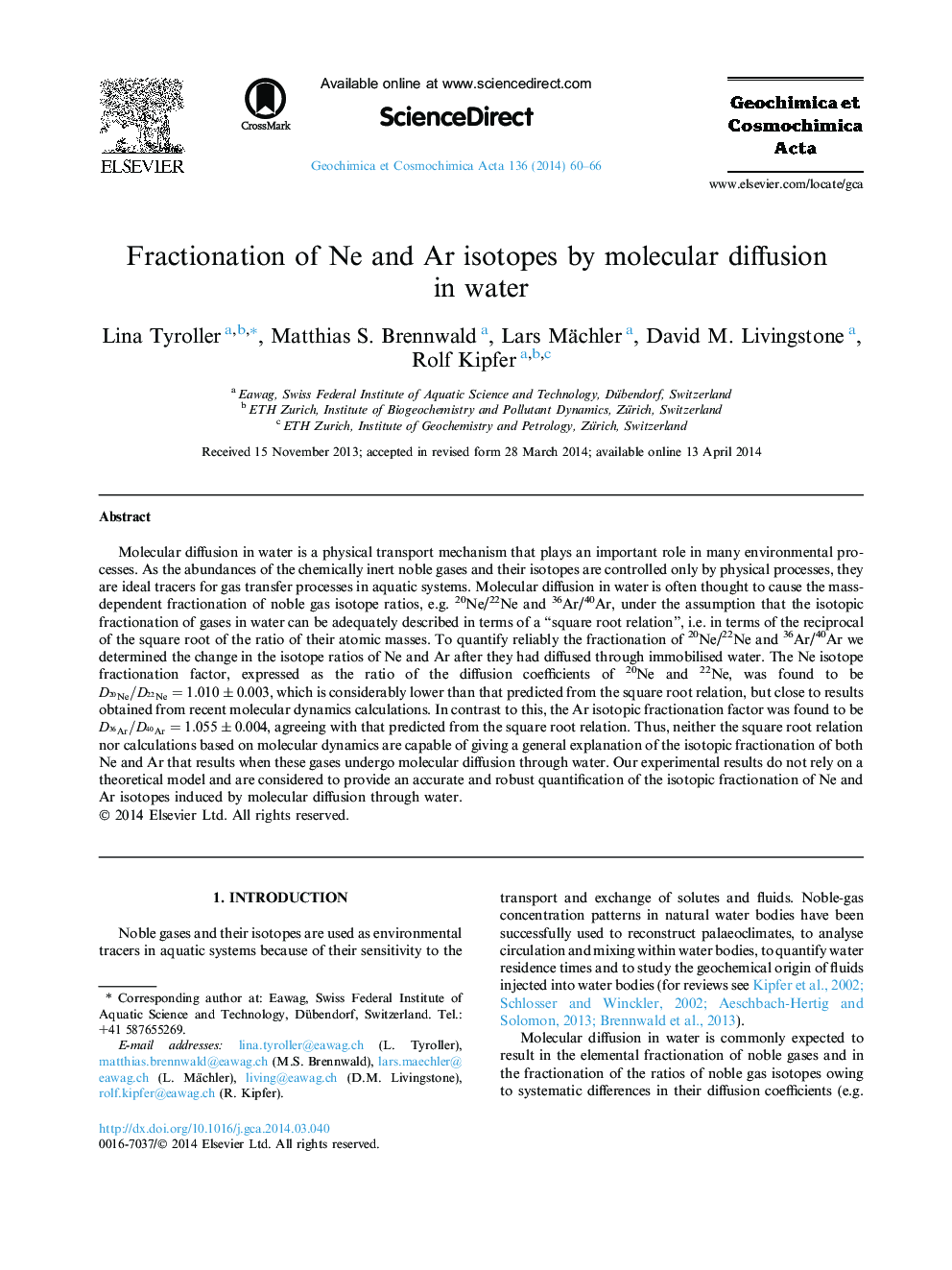| Article ID | Journal | Published Year | Pages | File Type |
|---|---|---|---|---|
| 6438596 | Geochimica et Cosmochimica Acta | 2014 | 7 Pages |
Abstract
Molecular diffusion in water is a physical transport mechanism that plays an important role in many environmental processes. As the abundances of the chemically inert noble gases and their isotopes are controlled only by physical processes, they are ideal tracers for gas transfer processes in aquatic systems. Molecular diffusion in water is often thought to cause the mass-dependent fractionation of noble gas isotope ratios, e.g. 20Ne/22Ne and 36Ar/40Ar, under the assumption that the isotopic fractionation of gases in water can be adequately described in terms of a “square root relation”, i.e. in terms of the reciprocal of the square root of the ratio of their atomic masses. To quantify reliably the fractionation of 20Ne/22Ne and 36Ar/40Ar we determined the change in the isotope ratios of Ne and Ar after they had diffused through immobilised water. The Ne isotope fractionation factor, expressed as the ratio of the diffusion coefficients of 20Ne and 22Ne, was found to be D20Ne/D22Ne=1.010±0.003, which is considerably lower than that predicted from the square root relation, but close to results obtained from recent molecular dynamics calculations. In contrast to this, the Ar isotopic fractionation factor was found to be D36Ar/D40Ar=1.055±0.004, agreeing with that predicted from the square root relation. Thus, neither the square root relation nor calculations based on molecular dynamics are capable of giving a general explanation of the isotopic fractionation of both Ne and Ar that results when these gases undergo molecular diffusion through water. Our experimental results do not rely on a theoretical model and are considered to provide an accurate and robust quantification of the isotopic fractionation of Ne and Ar isotopes induced by molecular diffusion through water.
Related Topics
Physical Sciences and Engineering
Earth and Planetary Sciences
Geochemistry and Petrology
Authors
Lina Tyroller, Matthias S. Brennwald, Lars Mächler, David M. Livingstone, Rolf Kipfer,
